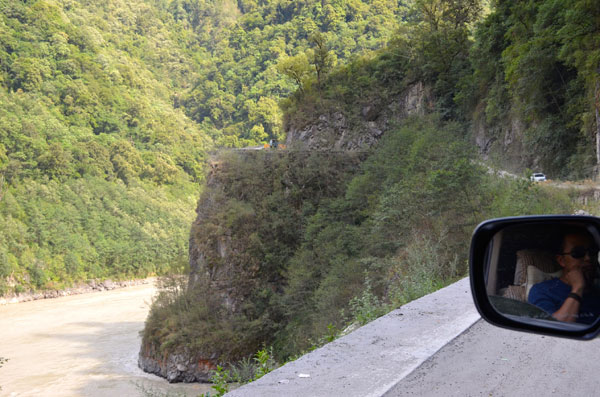 |
|
A hairpin bend on the "Tongmai Graveyard", Aug 5, 2015. [Photo by Chen Bei] |
Turn the steering wheel . . . Brake . . . Shift the gears . . . Reverse the car down a slope . . . Chodan carries out all the maneuvers in the blink of an eye.
The next minute, this highly experienced Tibetan driver needs to show patience as he has to wait in a long traffic jam.
The road Chodan's SUV bumps along is nicknamed "Tongmai Graveyard," a risky 17-kilometer section linking Bome and Bayi counties in Nyingchi city, southeastern Tibet autonomous region.
It is regarded by Chinese drivers as one of the most dangerous along the Sichuan-Tibet Highway on its southern route, which extends more than 2,000 km from Chengdu, Sichuan to Lhasa, Tibet.
The journey entails at least a three-hour drive, according to Chodan, who used to travel the route for 10 years.
"The road can hardly allow two cars at the same time," he said, adding, "an SUV has to make a stop if there is a truck coming head-on, and when they meet, the width between them is no more than 0.5 of a meter."
The high-elevation road winds in several "S" bends up one side of a mountain prone to mudslides. On the other edge runs the Parlung Tsangpo – a tributary of the Yarlung Tsangpo – about 30 m below.
"This section saw numerous mishaps – vehicle plunging into the abyss, car pile-ups, mudslides, traffic jams – each month," said Huang Bingyong, a police officer in charge of the area.
He said drivers could be stuck in congestion for up to 10 days if there were mudslides. "They sometimes needed to back up cars for a couple of kilometers in a bid to get out".
In the past three years, Huang has helped ease such traffic jams along the road for 300,000 vehicles, the equivalent of 274 cars a day.
Related Stories